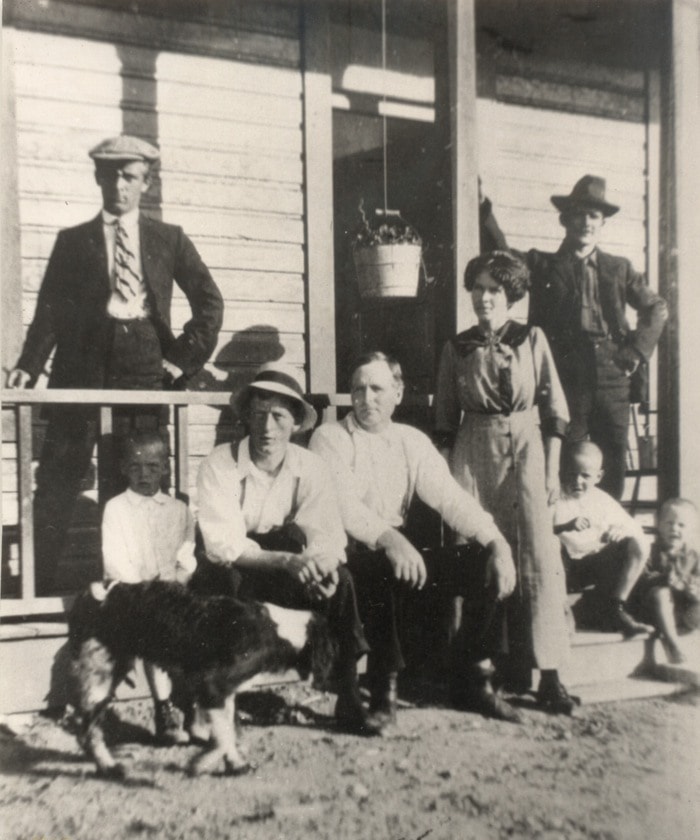After spending nine months here in 1912 — while working with the railway construction crew — Bob and Cassie (Catherine Martha) Beech returned to Osborne Bay near Crofton to help lay rails up to Lake Cowichan. They returned in November and for the next six years lived at a newly constructed section house by the railway station. Bob also worked there as [railway] section foreman. Today the railway station serves as the home of Kaatza Station Museum. At that time Cassie was one of just nine women residents of the lake community. Cassie and Bob had three sons, Harry, Dave and Tommy. The sons were all born before 1912.
In 1914 the Beeches built a hall, known as Beech Hall, near the present-day local Anglican Church. The lumber used was cut at the small Cottonwood (later named Youbou) Lumber Mill. Beech Hall was the area’s first dance hall and the center for social and community events. It was also used, for a short time, as one of the area’s earliest schools.
In Kaatza: The Chronicles of Cowichan Lake by John F. T. Saywell it says that some of Cassie’s memories were of attending the many dances and parties held at the old Riverside Inn and the Lakeside Hotel, and trips by railway handcar to and from dances and events at Sahtlam School near Duncan.
After leaving the railway section job, Bob started work at Empire Lumber as a boom man. In 1920 the family converted Beech Hall into a home where they lived for several years before it burnt down. Left with nothing, they were undaunted and immediately set to rebuilding on the same lot. By the mid 1960s it was the home of the Beeches’ grandson Tommy. In more recent years the house served as the residence and veterinary clinic of Dr. Patricia Henry
During the 1920s the Beeches took in boarders and sold fresh milk to augment the family income. Cassie rose early in the morning — often before 4 a.m. — to milk the cows and bottle the milk for early delivery to their customers. Occasionally she and her dog Queenie were forced to head out — walking nearly as far as Mesachie Lake — to round up the wandering cows. She sold meals, cakes, pies and bread to customers, mostly single men. In addition to her tiring work schedule she was also a sought-after midwife to many community woman when no doctor was available.
Rough, tough and extremely capable, Cassie seemed to fit in with both the elite (if there were such a thing here in earlier times) and the more numerous everyday Joe. She could drink tea with the area ladies one afternoon and then down a drink from one of the local bootleggers the next day. They were all the same to her. She was, without a doubt, a pioneer in every sense of the word.
Bob worked many years logging, including a partnership in Beech and Trace Logging Co., before moving on to other jobs. After retirement he took a janitorial job at the local high school but ill health caused him to throw in the towel a few months later. He died soon after in May 1950.
Cassie lived in the Cowichan Avenue family home until October 14, 1959, when she took her last breath. Two years before her death at age 73, she gave the Cowichan Lake Centennial Committee — who did much of the research for Saywell’s book — a very interesting perspective of life in the area after 1912. She also named many of the early residents during that time.
The “rugged old-timers,” as Saywell dubbed them, who “worked hard and often played hard,” lay buried along with some descendants, at Mountain View Cemetery, North Cowichan, B.C.
